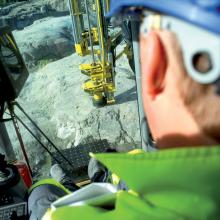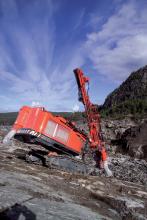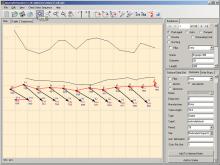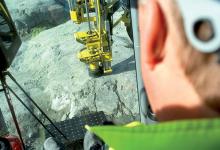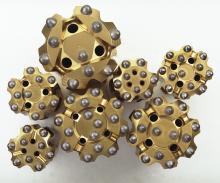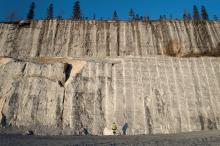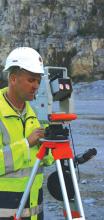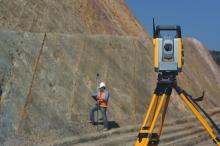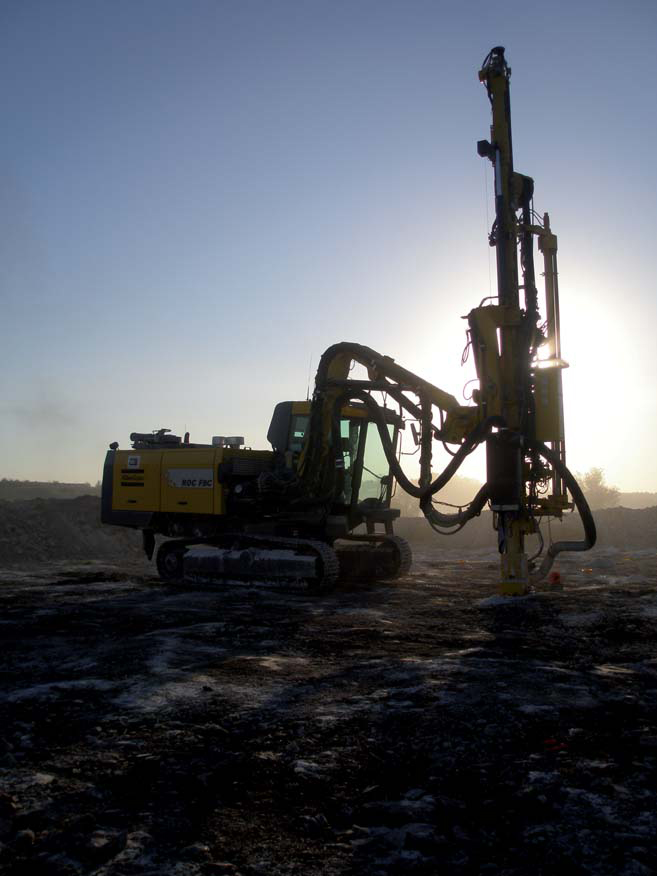
Blast hole drilling is becoming more hi-tech in a bid to maximise productivity with greater focus on automation and drill bit selection. Claire Symes reports
Do bespoke drill patterns and lengths that take bench variation into full consideration and rigs that can automatically locate and drill these sound like a space-age fantasy? Well, they are not and some quarries are already taking advantage of some of these technologies and seeing significant improvements in both productivity and safety as a result.
"Customers want to run continuous quality improvement programmes in line with ISO9001 but with drilling that has always been difficult," said Atlas Copco product manager automation Olav Kvist. "The drill pattern's repeated fashion fits with maintaining quality but the manual element of drilling reports, staking out and site variation in terms of blast face and surface elevation mean that in reality every blast is different and not repeatable." By scanning each individual face and creating a drill pattern with just the right burden, spacing and blast hole length, quarry operators can ensure they achieve the right level of fragmentation, reduce potential for fly rock and create smoother benches.
One of the companies developing this software is Germany-based
"Using a laser scanner in the field, quarry operators can measure the distance and angles of the crest and toe of the blast face, then in automatic mode it can scan around 20,000 points in as little as five minutes," explained Geo-Konzept's Martin Herkommer. "Using a GPS antenna on the scanner allows all the points to be geo-referenced. The information can be transferred to a laptop and, using 3D software, the best position for each blasthole in terms of spacing and burden can be calculated.
"The system avoids holes with weak burdens as they make no economic sense and can cause fly rock. The information can be transferred to the rig using Ireda format, which is an internationally used rock positioning code looks like HTML code. If used with a SmartRig, the rig can then automatically steer and drill the bespoke pattern. It removes the human error from marking out and drilling.
"The software can also be used with manual GPS - operators can use a GPS pole to mark the position of each blast hole and then use a manual rig to drill the hole." In regions like Scandinavia where the glacial morphology means that the top bench surface is very uneven, the system can adapt the blast design to take account of this. Also it may not be possible to drill the hole at the actual planned position so the software can be used to recalculate the hole length and depth at the nearest possible position.
According to Herkommer, the result is a smother bench with less potential for sub-drilling and reduced blast vibrations. "Trials in Germany have shown that the system is at least 10% more efficient and usually 20% more efficient on average," he said. "For companies that blast two times per day, extracting around 9000m3 each time, it effectively means that every fifth hole is free." Kvist said that testing of the system with its SmartRigs is planned for the second half of the year and will be commercially available in early 2010. There are currently 200 SmartRigs in use in quarries at the moment but Kvist expects that to grow.
"Quarrying is very conservative with the top 10% adopting the GPS-based system in two to three years," he said. "But these users see the benefit, and safety is likely to drive uptake of the system ahead of the potential cost savings.
"People are still too concerned with penetration rates rather than the whole process. To progress, the industry needs to look at itself as a process industry - a factory line - and consider the impact of each step and look for a way to change it." Both Kvist and Sandvik Mining and Construction global product line manager Pekka Kesseli agree that while many companies are interested in this new technology, many are holding back on investing in the short term.
"Most companies appear to be postponing investment for a while," said Kesseli. "There is still business going on as there is still a need to replace rigs but instead of upgrading and investing in more productive machines, many customers are opting for direct replacement.
"Despite most new rigs being sold right now being the more basic models, there are lots of enquiries coming in about the more hi-tech rigs. It seems a lot of quarry operators are positioning themselves ready to invest when demand for materials returns." One area where more quarry operators are looking at in more detail to improve productivity is through investment in drill bit technology. "Advances in control systems on the more hi-tech rigs are benefitting quarries through better drill steel life and also straighter holes," said Kesseli. "But there are still improvements to be made through the right choice of consumables. Drill bits have evolved to have a longer sleeve to better support the bit. The bit face - the buttons - are now formed by different carbides and have different shapes to optimise them for different applications. Quarry operators now have the choice of ballistic and semi-ballistic designs.
"Testing is important to ensure the right combination is being used in the quarry. In the next year I think more quarries will look at bit investment to improve productivity rather than invest in new rigs." Drill bit specialist Rockmore has also noticed this trend. "Clients are now analysing their operations closely for improvements and efficiency gains in drilling operations," said Rockmore executive vice president Pejman Eghdami. "They now have the time to do this since there has been a market downturn and I believe they are looking at the bit performance very closely to measure and improve the drilling results." Rockmore recently broke with conventional design and launched a new 'dimpled' button drill bit, which the company claims is the first major development for quarry drilling for some time. "The MultiPoint bits have had a tremendous positive reaction in the field," said Eghdami. One of the first customers, which operates six Sandvik Pantera rigs, has reported that the new bits offer 20% more service life. According to Eghdami, the individual points on the carbide providing separate contact points to the rock, leading to better crack propagation and faster penetration.
Future developments
Greater automation and more computer-based development looks set to become the norm once the current financial difficulties have passed, but what lies in store for the rigs themselves? According to Kesseli, there is still more work to be done on reducing noise and dust but the manufacturers are also looking at alternative power supplies. "Hybrid machines are possible in the long term but the stationary nature of drilling rigs makes application of the technology more difficult than in load and haul machines where hybrid designs are already available," he said.
In terms of drill bit development, Eghdami said that the focus is on both metallurgy and geometry.
On guard
Finland-based Lemminkäinen Infra Oy Mineral Aggregates's operation has been benefitting from the developments in noise reduced drilling technology. The company has successfully deployed a Sandvik Ranger 780 drilling rig (now DX780) fitted with the NoiseGuard muffler system to a site in Kirkkonummi near Helsinki in order to complete drilling work close to an urban area and meet with tight noise restrictions.

